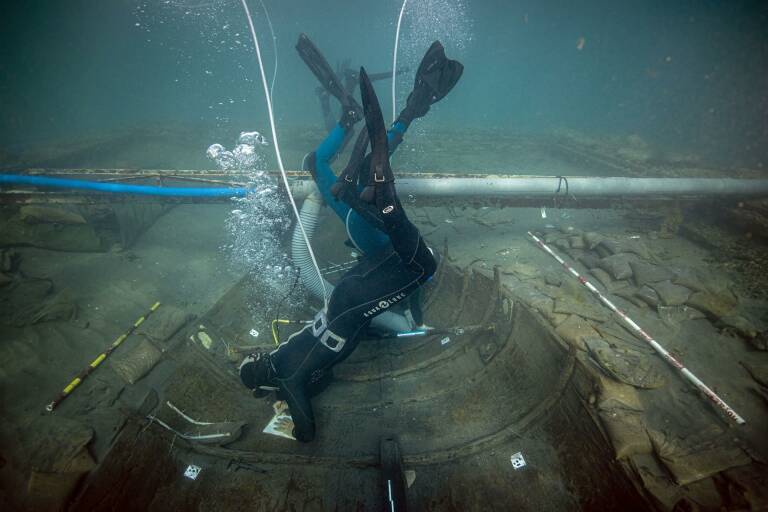AN ARCHAEOLOGICAL team from Valencia has made an extensive survey of a 2,500-year-old Phoenician ship to work out the best option to get it safely out of the sea.
The eight-metre-long Mazarron II is named after the town in the Murcia region where it was found off the coast in 1994.
It is regarded as the most complete ancient ship to be discovered but unless it is taken to shore, it risks further damage by sea currents and storms.
The vessel was found largely intact and is eight metres long and just over two metres wide with a cargo of lead ingots weighing 2,820 kilos.
The University of Valencia sent nine archaeologists for over a fortnight of scuba diving in June to log any cracks and fissures across the ship which lies 60 metres from Mazarron’s Playa de la Isla.
Later this year, the experts will recommend how to protect and retrieve the wreck, possibly as early as next summer.

It’s new home would be the National Museum of Marine Archaeology further up the Murcia coast in Cartagena where Mazarron I- restored 30 years ago- is currently on display.
That vessel was discovered by chance in 1988 during the construction of a new marina.
Historians have used the Mazarron II, probably made around 580 BC, to document how the Phoenicians shipped metals such as lead from the Iberian Peninsula.
After it sank, it remained buried in sediment for more than two thousand years until changes in sea currents due to construction on the shore unearthed it in 1994.
It now lies under about 1.7 metres of water surrounded by sandbags and a metal structure built for protection.
The structure however is sinking into the sand at a faster pace than the wreck and threatened to crush it, so it was partially removed.









